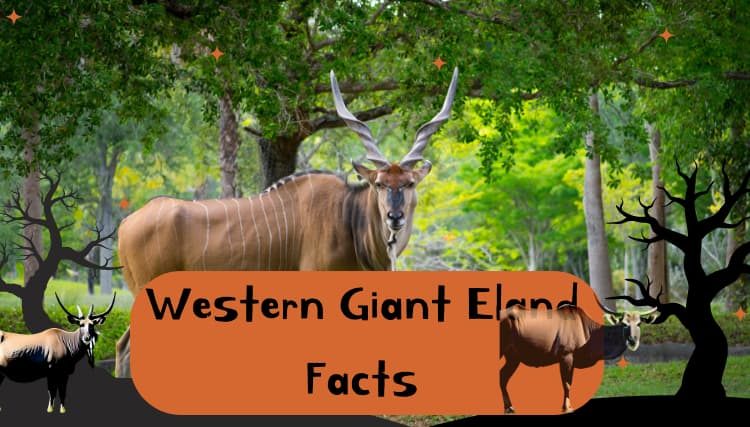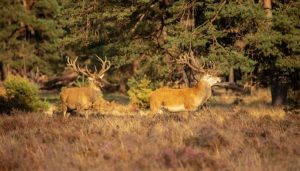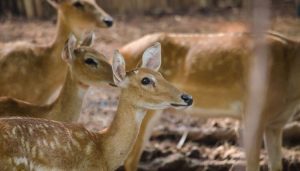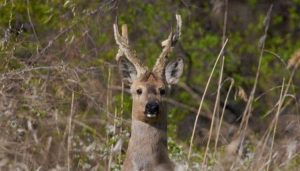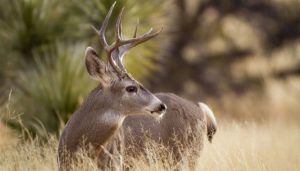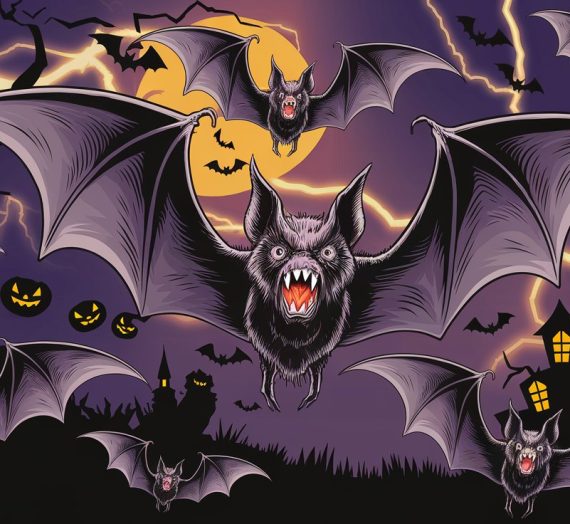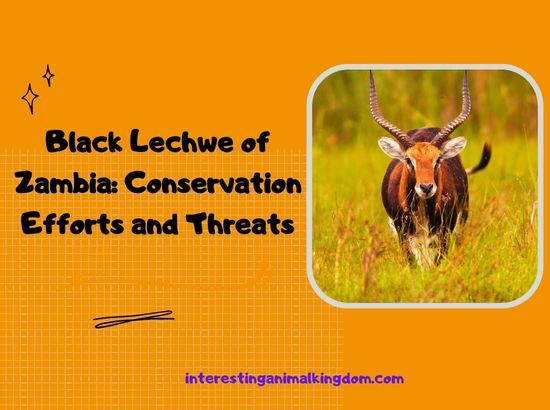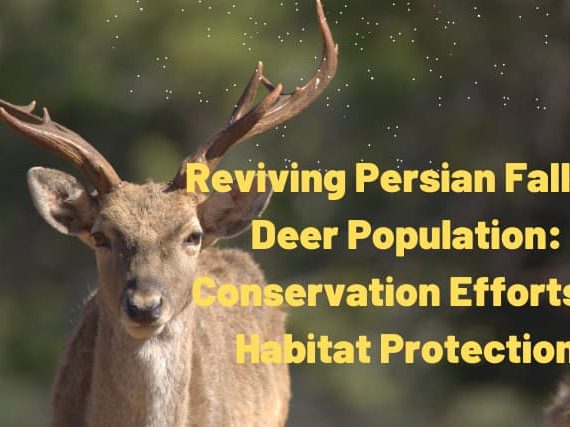The Western Giant Eland Antelope is a fascinating animal that roams the woodlands and savannas of western and southern Africa. As one of the largest antelopes in the world, these animals can grow up to 6 feet tall and weigh as much as 2,000 pounds. Their long, spiral horns can reach lengths of up to 4 feet and are used for defense against predators and dominance among males.
The Western Giant Eland Antelope belongs to the family Bovidae, which also includes other savanna antelopes such as bushbuck, kudu, and western derby eland. These animals have adapted to living in open grasslands where they can easily spot predators from a distance. They travel in large herds consisting of females, their young, and a few dominant males.
One interesting fact about the Western Giant Eland Antelope is that they have been successfully domesticated in some areas where they are bred with domestic cattle. This has helped to preserve their population while also providing a source of meat for local communities.
Despite being hunted for their meat and horns by humans, these animals are still able to thrive in protected areas such as Niokolo Koba National Park in Senegal. The park provides a haven for many wildlife species including the Western Giant Eland Antelope.
In terms of size, the Western Giant Eland Antelope is considered to be the largest antelope in the world. Their impressive stature makes them an important part of their ecosystem as they play a crucial role in maintaining balance among other animals within their habitat.
Physical Characteristics of the Western Giant Eland
Body Length: Up to 3 meters
The western giant eland antelope is a majestic creature that can grow up to an impressive body length of three meters. This makes them one of the largest species of antelopes in the world. Their long and slender legs, combined with their massive size, make them a sight to behold in their natural habitat.
Their impressive body length allows them to move quickly and gracefully through the grasslands where they live. They are known for their incredible speed and agility, which helps them evade predators such as lions and hyenas. The western giant Eland’s large size also gives them an advantage when it comes to finding food.
Weight: Up to 900 kg
The western giant Eland antelope is not only long but also heavy, weighing up to 900 kg. This makes them the largest antelope species in the world. Their weight is evenly distributed throughout their bodies, allowing them to move with ease despite their size.
Their impressive weight also serves as protection against predators that may try to attack them. The western giant eland’s physical strength makes it difficult for predators such as lions or hyenas to take down one of these massive creatures.
Coat: Reddish-Brown with Vertical White Stripes
One of the most distinctive features of the western giant eland is its coat, which is reddish-brown with vertical white stripes on its torso and legs. These stripes serve as camouflage in the grasslands where they live, helping them blend into their surroundings and avoid detection by predators.
Male western giant elands have darker coats than females, making it easier for other members of their herd to identify each other during mating season.
Horns: Long Spiral-Shaped Horns
Both male and female western giant elands have long spiral-shaped horns that can grow up to 1.5 meters in length. These horns are used primarily for defense against predators and during mating season to establish dominance over other males.
Their thick and muscular necks allow them to support their heavy heads and horns, which can weigh up to 12 kg. The horns are also used as a visual display during courtship rituals, making the western giant eland an impressive sight to see during mating season.
Strength: Less Vulnerable to Predators
The western giant eland’s large size and physical strength make them less vulnerable to predators in their natural habitat. They can defend themselves against most predators with their powerful horns and sheer size alone. Their speed and agility also make it difficult for predators to catch them.
The western giant eland can go for long periods without water, making it easier for them to survive in areas where water sources may be scarce. This combination of physical attributes makes the western giant eland one of the most formidable creatures on the African grasslands.
Habitat and Distribution of the Western Giant Eland

Large Home Ranges
The Western Giant Eland is a majestic antelope species that inhabits savannas, woodlands, and forests. They have large home ranges that can span up to hundreds of square kilometers. This large range is necessary for their survival as it allows them to find enough food and water resources to sustain themselves.
The giant eland’s home range varies depending on the season and availability of resources. During the rainy season, they tend to stay in one area where food and water are abundant. However, during the dry season when resources are scarce, they migrate long distances in search of water sources and mineral lick sites.
Natural Habitat
The natural habitat of the Western Giant Eland includes various places across West and Central Africa such as Cameroon, Senegal, and the Democratic Republic of Congo. These areas provide suitable conditions for giant elands to thrive due to their diverse vegetation types and ample yearly rainfall.
In Cameroon, for example, giant elands are found in the Faro National Park, which covers an area of 3,300 km². The park provides a variety of habitats such as savannas with scattered trees, gallery forests along riversides, and valleys with dense forest cover.
Water Sources
Water sources are essential for giant elands’ survival; thus they often migrate during the dry season to find them. They need a regular supply of fresh water for drinking purposes but also like to wallow in mud or shallow pools as a way of cooling off from the hot sun.
For instance, in Senegal’s Niokolo-Koba National Park during the dry season (November – May), giant elands move towards permanent water sources like streams or rivers located within their home range or outside it if necessary.
Mineral Lick Sites
Mineral lick sites are another crucial aspect of giant elands’ habitat as they provide minerals that are not available in their diet. These sites are often naturally occurring and can be found in forests or savannas.
In the Democratic Republic of Congo, for example, giant elands are known to frequent mineral lick sites located near rivers. These licks provide essential minerals such as calcium, sodium, and magnesium that are necessary for their growth and development.
Western Giant Eland Population
The Western Giant Eland population has been declining due to habitat loss, poaching, and hunting. In some areas like Senegal’s Niokolo-Koba National Park, their numbers have decreased by more than 80% over the past few decades.
Conservation efforts are being made to protect these magnificent creatures. For instance, Cameroon’s Faro National Park has implemented measures such as anti-poaching patrols and community-based conservation programs that involve local people in protecting giant elands’ habitat.
Diet of the Giant Eland
Grasses, Leaves, and Shoots: The Main Diet of Giant Elands
Giant elands are known for their massive size and impressive horns. These antelopes are native to the savannas and woodlands of central and western Africa. They are herbivores, which means that they primarily consume plants.
The giant eland’s diet consists mainly of grasses, leaves, and shoots. They have a specialized digestive system that allows them to extract nutrients from tough plant materials. They can digest cellulose-rich foods more efficiently than other ruminants like cows or sheep.
However, giant elands also consume a significant amount of woody plants, bark, and fruits. They have been observed eating the leaves and stems of trees such as acacia and baobab. During the dry season when food is scarce, they may even resort to eating roots or digging for water.
Occasional Prey on Common Eland Calves
While giant elands are primarily herbivores, they have been observed to occasionally prey on common eland calves. However, this behavior is not a regular part of their diet. It is believed that they only resort to hunting when food sources are scarce or during periods of drought.
Rich Meat but Endangered Status
The meat of giant elands is rich in nutrients and is considered a delicacy in some parts of Africa. It has been described as having a mild flavor similar to beef but with a slightly gamy taste. However, due to their endangered status, regular intake of their meat is not recommended.
Giant elands face threats such as habitat loss due to human activities like farming and logging. They are also hunted for their meat or trophy horns by humans. As a result, their population has declined significantly over the years.
Ecology and Behaviour of the Giant Eland
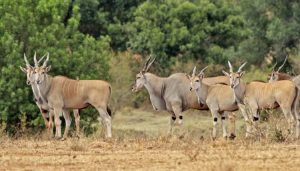
Eastern Giant Eland: Ecology and Behaviour
Herbivores of the genus Taurotragus, the giant eland (Tragelaphus derbianus) is a majestic antelope species found in Central and West Africa. The eastern giant eland, also known as Taurotragus derbianus derbianus, is one of the two subspecies and is characterized by distinctive white stripes on its upper forelegs. Here are some interesting facts about the ecology and behavior of this amazing animal.
Giant Eland Herds:
Giant elands are social animals that live in herds consisting of up to 60 individuals, including young elands. These herds may occasionally mix with other species such as common elands or derby elands. Lord Derby’s eland is another subspecies of giant eland that can be found in Central Africa.
Ecology:
The ecology of the giant eland is characterized by seasonal migration patterns in search of food and water sources. During the wet season, they move to areas with abundant vegetation for grazing while during the dry season, they migrate towards rivers and other water sources for drinking.
Behavior:
Giant elands are primarily active during the day but may also be active at night when temperatures are cooler. They communicate using a variety of sounds like grunts, snorts, and bellows. Males use their horns to defend themselves against predators or rivals during mating season.
Threats:
Unfortunately, habitat loss due to human activity like deforestation has led to a decline in giant eland populations across Africa. In addition to habitat loss, hunting for meat and trophy hunting have also contributed significantly to their dwindling numbers.
Conservation Efforts:
Efforts are being made to conserve these magnificent animals through various conservation programs across Africa. For instance, protected areas have been established where these animals can live safely without fear of poaching or habitat destruction.
Genetics and Evolution of the Giant Eland
Taurotragus derbianus gigas, commonly known as the western giant eland, is a majestic species that inhabit the savannas and grasslands of West and Central Africa. Here are some interesting facts about its genetics and evolution.
Scientific Name: Taurotragus Derbianus Gigas
The western giant Eland is scientifically known as Taurotragus derbianus gigas. The genus Taurotragus is believed to have evolved around 20 million years ago and is closely related to the bushbuck and kudu.
Exceptional Jumpers
Giant elands are exceptional jumpers and can leap up to 2.5 meters high. This ability allows them to escape predators or cross obstacles such as fences or fallen trees.
Subspecies
The species is divided into two subspecies, the western giant eland (Taurotragus derbianus gigas) and the eastern giant eland (Taurotragus derbianus derbianus). The western giant Eland has larger ears than its eastern counterpart.
Hair Color
Dominant males have black hair while females and young males have brown hair. This difference in hair color helps distinguish between males during mating season.
Reproduction
Giant elands reach sexual maturity at around 2 years old. They have 31 chromosomes in total, which is relatively low compared to other mammals their size.
Evolutionary History
The evolutionary history of the giant eland can be traced back millions of years ago when it first diverged from its ancestors. Over time, this species has evolved adaptations that help it survive in its environment, including its exceptional jumping abilities, large ears for hearing predators approaching from far away, and dark hair color for male dominance displays during mating season.
Threats to the Survival of the Western Giant Eland
Habitat Destruction and Fragmentation
The Western giant eland antelope is an endangered species, with a critically endangered status. The population of the giant eland is declining due to habitat destruction and fragmentation, which has led to small herds. Human activities such as agriculture, deforestation, and urbanization have destroyed the natural habitats for food and shelter. This has caused them to be displaced from their natural range, leading to smaller populations.
Livestock Populations
Livestock populations also pose a threat to the survival of the giant eland, as they compete for resources and can transmit diseases. With grazing lands becoming scarce due to human encroachment into their natural habitats, livestock owners are forced to move their herds into areas where wild animals live. This competition for resources puts pressure on the already dwindling population of giant elands.
Predators
Predators such as lions and hyenas also prey on the giant eland, further reducing their numbers. As these predators continue to hunt for food in areas where human activity has caused habitat destruction and fragmentation, they are more likely to come across smaller populations of giant elands. This puts additional stress on these already threatened animals.
Poisonous Plants
Poisonous plants are also a threat to the giant eland, particularly during the rainy season when they are more abundant. These plants can cause serious harm or even death if ingested by these animals. During periods of drought or when food is scarce, some animals may resort to eating these poisonous plants out of desperation.
Captive Population
To mitigate these threats, a captive population has been established to help preserve the species. However, their life expectancy in captivity is lower than in the wild due to various factors such as lack of genetic diversity and inability to adapt fully to their natural environment once released back into it.
Importance of Conservation Efforts for the Giant Eland
Conservation Efforts for the Western Giant Eland Antelope
Crucial Conservation Efforts
The western giant eland antelope is a majestic animal that is native to West Africa. Unfortunately, their population has been rapidly declining due to habitat destruction and poaching. This is why conservation efforts are crucial in protecting this species from extinction. These conservation efforts include establishing reserves, providing safe habitats, and raising awareness about the importance of protecting these animals.
White Oak Conservation
One organization that has been working towards the conservation of the western giant eland antelope is White Oak Conservation. This non-profit organization provides a safe and natural habitat for these animals to thrive in. They have established breeding programs, which have helped increase the population of these animals significantly. In addition to this, they also work towards educating people about the importance of conserving wildlife and preserving natural habitats.
Establishment of Reserves
Another way that conservation efforts are being made for the western giant eland antelope is through establishing reserves. These reserves provide a protected area where these animals can live without fear of being hunted or losing their habitat due to human activities such as deforestation or mining. The establishment of these reserves has played a significant role in increasing the population of these animals.
Success Stories
Thanks to these conservation efforts, there has been an increase in the population of western giant eland antelopes in recent years. For example, according to reports from White Oak Conservation, their breeding program alone has increased the number of captive-born calves by over 50% since 2019. In addition to this success story, other reserves around West Africa have reported similar increases in populations due to their conservation efforts.
Conservation Status of the Giant Eland
Vulnerable Conservation Status
The western giant eland antelope, one of the largest antelopes in the world, is currently listed as “vulnerable” by the International Union for Conservation of Nature (IUCN). This means that its population has declined significantly, and it is at risk of extinction if conservation efforts are not implemented. The IUCN Red List also recognizes different conservation statuses for the western giant eland antelope in various regions. For instance, it is classified as “endangered” in Senegal and “critically endangered” in Nigeria.
Fathala Reserve’s Role
The Fathala Reserve in Senegal has played a crucial role in the conservation of the western giant eland antelope. The reserve has successfully implemented breeding programs and habitat restoration efforts to increase its population. The reserve’s success can be attributed to its strong partnership with local communities that have been educated on sustainable management practices.
Population Decline
Despite conservation efforts, the population of the western giant eland antelope continues to decline due to habitat loss, hunting, and competition with domestic livestock. In some countries like Burkina Faso and Niger, they are hunted for their meat or horns. In other areas like Senegal and Mali, their habitat is being destroyed by agricultural expansion and human settlement.
Keystone Species
The status of the western giant eland antelope serves as an indicator of ecosystem health since it is a keystone species that plays a vital role in maintaining biodiversity. Keystone species are vital components within an ecosystem because they maintain balance among other species by controlling populations’ growth through predation or competition.
Conservation Efforts Necessary
Continued conservation efforts and sustainable management practices are necessary to ensure the survival of both western giant eland antelopes and their habitats. These efforts include implementing anti-poaching measures such as patrols to deter illegal hunting activities; creating protected areas to preserve their habitats, and educating local communities on sustainable management practices. Governments can provide incentives for locals to participate in conservation efforts by promoting ecotourism.
Why We Should Protect the Western Giant Eland Antelope
Protecting the Western Giant Eland Antelope is crucial for the survival of this majestic species. With their unique physical characteristics, such as their impressive horns and distinctive coat patterns, they are a valuable part of our planet’s biodiversity. Their habitat and distribution are limited, making it even more important to preserve their natural environment.
The Giant Eland’s diet consists mainly of leaves, grasses, and fruits. They play a vital role in maintaining the ecological balance of their ecosystem by spreading seeds through their dung. They are social animals that form herds and have complex communication systems that help them navigate through different environments.
However, the Western Giant Eland Antelope faces numerous threats to its survival. Habitat loss due to deforestation and human encroachment is one significant challenge they face. Poaching for bushmeat and trophy hunting also pose a severe threat to their population numbers.
Conservation efforts are essential in protecting this species from extinction. The establishment of protected areas where they can thrive without human interference is one step towards ensuring their survival. Educating local communities about the importance of conservation efforts can lead to better protection for these animals.
The conservation status of the Western Giant Eland Antelope is currently listed as vulnerable on the IUCN Red List. However, with continued efforts towards conservation and preservation of their natural habitats, we can ensure that future generations will be able to witness these magnificent creatures in all their glory.

